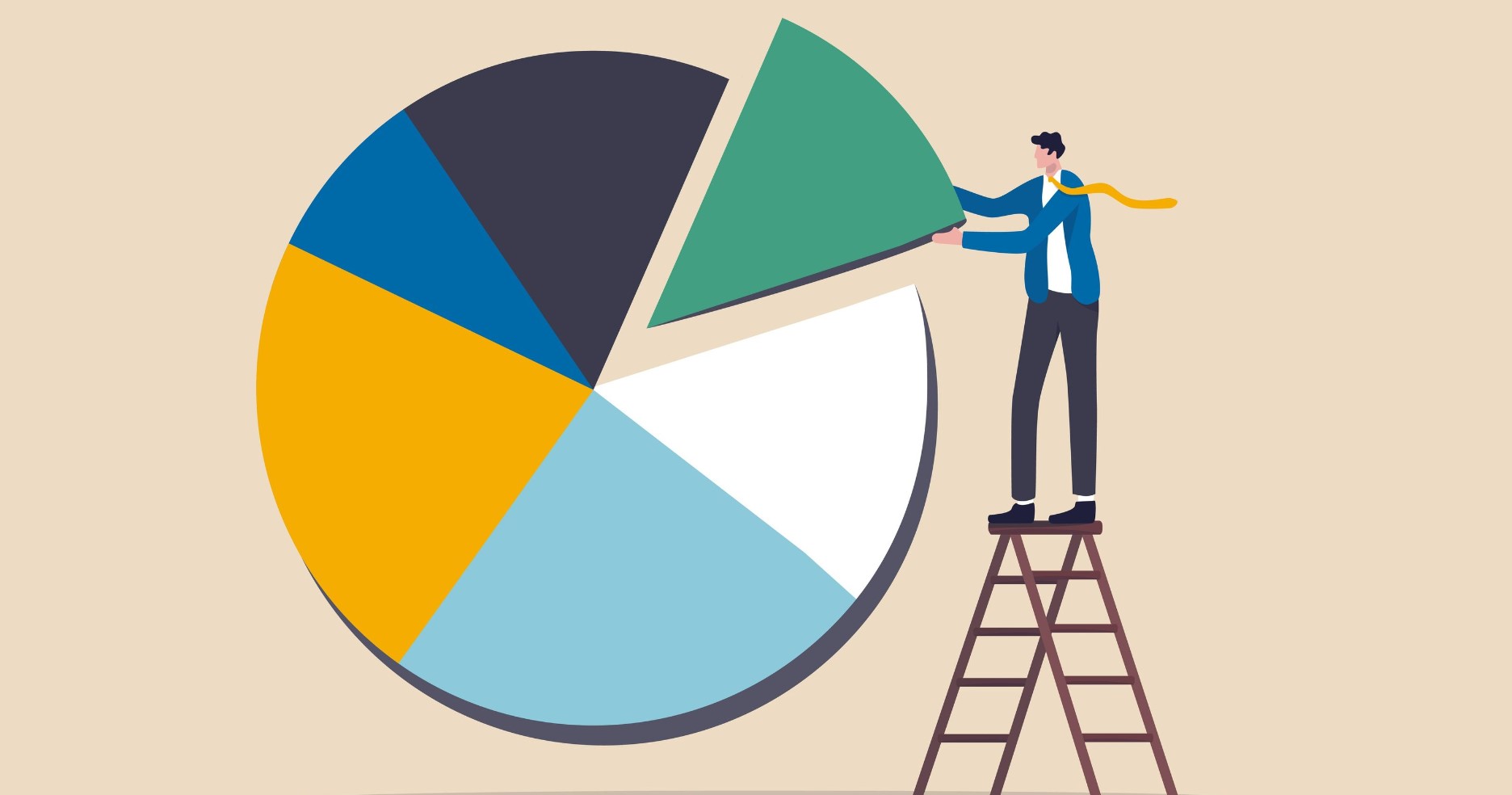A diversified trading portfolio is a strategic investment approach that involves spreading your capital across various asset classes, industries, and geographical regions. The primary objective is to reduce overall risk and enhance potential returns by not relying solely on one investment. A well-diversified portfolio may include stocks, bonds, real estate, commodities, and alternative investments.
Why is Diversification Important?
Diversification is vital because it safeguards your investments from significant losses in the event of a downturn in a specific market or asset class. By distributing your funds across different investments, you minimize the impact of a single investment’s poor performance on your overall portfolio. This approach can help maintain a more stable and predictable growth trajectory.
The Role of Asset Allocation
Asset allocation, a critical component of building a diversified portfolio, refers to dividing your investments among different asset classes based on your risk tolerance, financial goals, and investment horizon. Striking the right balance between stocks, bonds, and other assets is essential to achieve your desired level of risk and return.
Assessing Your Risk Tolerance and Financial Goals
Before building a diversified trading portfolio, it’s essential to assess your risk tolerance and financial goals.
1. Understanding Risk Tolerance
- Risk tolerance refers to your willingness and ability to withstand fluctuations in the value of your investments. It depends on various factors, including your age, income, investment experience, and overall financial situation. Knowing your risk tolerance helps you select suitable investments that align with your comfort level.
2. Identifying Financial Goals
- Defining your financial goals is crucial for building a purposeful portfolio. Are you aiming for long-term growth, income generation, or capital preservation? Identifying clear goals will guide your investment decisions and ensure your portfolio aligns with your desired outcomes.
Exploring Asset Classes for Diversification
In this section, we’ll delve into different asset classes that contribute to a well-rounded diversified trading portfolio.
Equities: Stocks and Beyond
Equities, or stocks, represent ownership in a company. They offer potential for significant growth but also come with higher volatility. We’ll explore common stock types, such as blue-chip, growth, and value stocks, as well as the importance of including international stocks in your portfolio.
Fixed-Income Securities: Bonds and More
Fixed-income securities, like bonds, are debt instruments that pay interest over time. They offer stability and income but may have lower growth potential. We’ll discuss government bonds, corporate bonds, and the role of bond funds in diversification.
Real Estate Investments
Real estate investments provide an opportunity to benefit from property value appreciation and rental income. We’ll explore various ways to invest in real estate, such as REITs and real estate crowdfunding.
Commodities and Precious Metals
Commodities and precious metals play a crucial role in diversifying investment portfolios. Commodities encompass a wide range of raw materials and resources, including energy products like crude oil and natural gas, agricultural products like corn and soybeans, and metals like copper and aluminum. These assets are highly influenced by supply and demand dynamics, geopolitical events, and global economic conditions, making them attractive for investors seeking diversification beyond traditional securities. On the other hand, precious metals, such as gold, silver, platinum, and palladium, are considered safe-haven assets due to their intrinsic value and historical role as stores of wealth. These metals often serve as a hedge against inflation and economic uncertainties, providing stability to investment portfolios during times of market volatility.
| Aspect | Commodities | Precious Metals |
| Definition | Broad category of raw materials and resources | Valuable, rare metals with intrinsic value |
| Examples | Crude oil, natural gas, corn, soybeans, etc. | Gold, silver, platinum, palladium, etc. |
| Price Influence | Supply and demand dynamics | Geopolitical events, economic uncertainties |
| Volatility | Generally higher due to market factors | Relatively stable in times of market turmoil |
| Role in Portfolio | Offers diversification beyond securities | Acts as a safe-haven during economic crises |
| Inflation Hedge | May not always provide effective inflation hedge | Highly effective as a hedge against inflation |
| Industrial Use | Widely used in manufacturing and industries | Limited industrial use, primarily as jewelry |
| Investment Vehicles | Futures contracts, ETFs, mutual funds, etc. | Physical bullion, ETFs, mining company stocks |
| Risk Profile | Moderately high due to market fluctuations | Generally considered low-risk investments |
Alternative Investments
Alternative investments, such as private equity, hedge funds, and venture capital, offer unique opportunities outside traditional markets. We’ll analyze the role of alternative investments in diversification and factors to consider before including them in your portfolio.
Strategies for Building a Diversified Portfolio
Creating a well-diversified trading portfolio requires thoughtful planning and adherence to proven strategies.
1. Dollar-Cost Averaging
- Dollar-cost averaging involves investing a fixed amount of money at regular intervals, regardless of the asset’s price. This strategy reduces the impact of market volatility and can lead to lower average costs per share.
2. Rebalancing Your Portfolio
- Rebalancing ensures that your portfolio maintains the desired asset allocation. We’ll explain how to rebalance and the importance of periodic reviews to align with your financial goals.
3. Avoiding Overconcentration
- Overconcentration occurs when a large portion of your portfolio is invested in a single asset or sector. We’ll discuss the risks associated with this approach and how to avoid overconcentration.
4. Risk Management and Hedging
- Implementing risk management techniques, such as stop-loss orders and options trading, can protect your portfolio from significant losses during market downturns.
5. Staying Informed and Updated
- Continuous learning and staying informed about market trends and economic conditions are essential for making informed investment decisions.
FAQs
- Is building a diversified trading portfolio suitable for beginners?
Yes, diversification is crucial for investors of all levels. Beginners can benefit significantly from this approach as it mitigates risks and provides a solid foundation for long-term growth.
- Can I diversify my portfolio with limited funds?
Absolutely. Diversification is possible with any investment amount. Even with limited funds, you can invest in exchange-traded funds (ETFs) that track multiple assets, achieving instant diversification.
- How often should I rebalance my portfolio?
Rebalancing can be done annually or semi-annually, depending on your risk tolerance and investment horizon. It’s essential to avoid frequent adjustments, as it may lead to unnecessary trading fees.
- What is the role of bonds in a diversified portfolio?
Bonds provide stability and steady income, acting as a counterbalance to the volatility of equities. They play a crucial role in diversification, especially for conservative investors.
- Are alternative investments suitable for everyone?
Alternative investments are more complex and may carry higher risks. They are best suited for experienced investors with a higher risk appetite.
- Should I hire a financial advisor for portfolio management?
If you are unsure about your investment decisions or lack the time and expertise to manage your portfolio effectively, hiring a financial advisor can be a wise choice.
Inference
Building a diversified trading portfolio is the foundation of successful investing. By spreading your investments across various assets, you can reduce risk while maximizing potential returns. Remember to assess your risk tolerance and financial goals before creating your portfolio. Explore different asset classes, implement diversification strategies, and stay informed about the market. With the right approach and consistent efforts, you can achieve your financial objectives and secure a brighter financial future.

